Figures
 | Figure 1.1a.
Stages of the human male sexual response cycle |
 | Figure 1.1b.
Stages of the human female sexual response cycle |
 | Figure 1.2.
Relationship of phylogenetic and ontogenetic familiarity to initial-stimulus
appetence and stimulus discriminability |
 |
Figure 1.3.
Distribution of the trait "discriminative ability"
in a hypothetical
population. Distribution of the trait "discriminative ability"
in a hypothetical
population. |
 | Figure 1.4.
Oystercatcher reacting to giant egg (supra-normal stimulus) in preference
to normal egg (foreground) and herring gull's egg (left). |
 | Figure 1.5.
Relationship of stimulus fitness and stimulus potency to the degree of
stimulus discrimination in the perceiving individual |
 | Figure 1.6.
Relationship of total stimulus potency (or overall desirability) of a
perceived
individual to the number of near optimally-discriminated-for-fitness
stimuli by a perceiving individual |
 | Figure 1.7.
Human heterosexual-male sexual releasing stimuli |
 | Figure 1.8.
"Infant/child schema" of humans |
 | Figure 1.9.
The relationship of relative age and relative gender of
individuals toward whom one is sexually attracted—represented by four
Attraction Quadrants |
 | Figure 1.10.
Relationship of male androphilic and gynephilic
pedophiles and ephebophiles to male individuals with other sexual
orientations and to the Attraction Quadrants of relative-age and
relative-gender attraction throughout the life span |
 | Figure 1.11.
Relationship of brain masculinization and brain
defeminization in the male to relative-age and relative-gender preferences
in the four Attraction Quadrants |
Figure 1.1a. Stages of the human male sexual response cycle 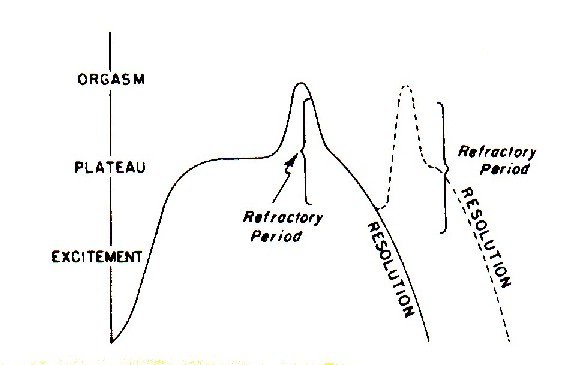
(Source W. H. Masters and V. E. Johnson, Human sexual response [Boston:
Little, Brown and Company, 1966], p. 5.) (Reprinted with the permission of
the Masters & Johnson Institute.)
Figure 1.1b. Stages of the human female sexual response cycle 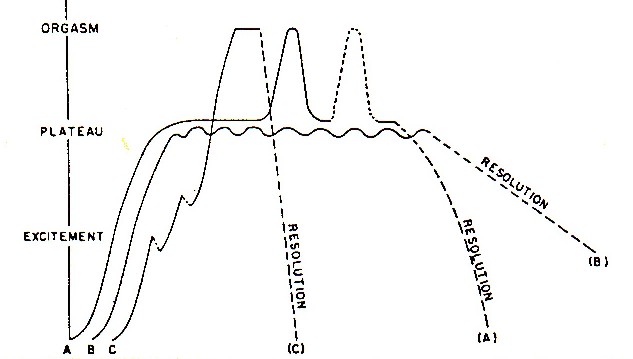
(Source: W. H. Masters and V. E. Johnson, Human sexual response [Bostonz
Little, Brown and Company, 1966], p. 5.) (Reprinted with the permission of
the Masters & Johnson Institute.)
Figure
1.2.
Relationship of phylogenetic and ontogenetic familiarity to initial-stimulus
appetence and stimulus discriminability
| |
Initial-stimulus appetence |
Stimulus discriminability |
| Philogenetic familiarity |
high |
low |
| Ontogenetic familiarity |
low |
potentially high |
Figure 1.3.
Distribution of the trait "discriminative ability"
in a hypothetical
population.
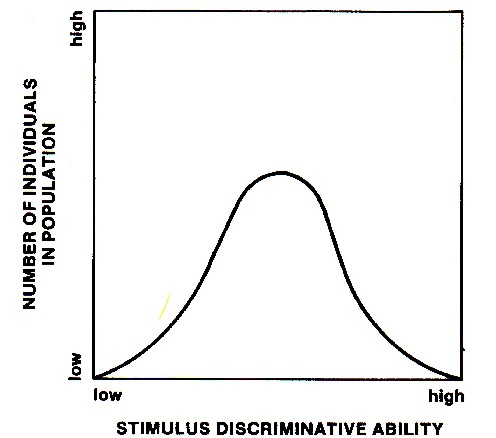
Figure 1.4.
Oystercatcher reacting to giant egg (supra-normal stimulus in preference
to normal egg (foreground) and herring gull's egg (left).
(From N. Tinbergen, The study of instinct, Oxford University Press, 1951,
p. 45. Reprinted with the permission of the publisher.)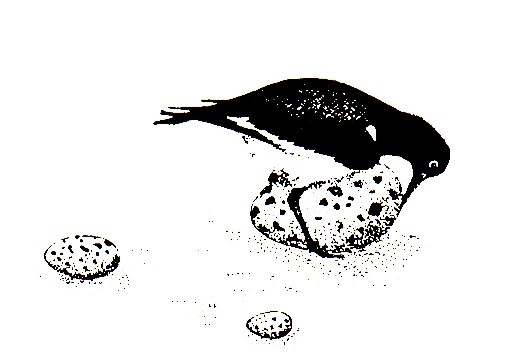 Figure 1.5
Relationship of stimulus fitness and stimulus potency to the degree of
stimulus discrimination in the perceiving individual 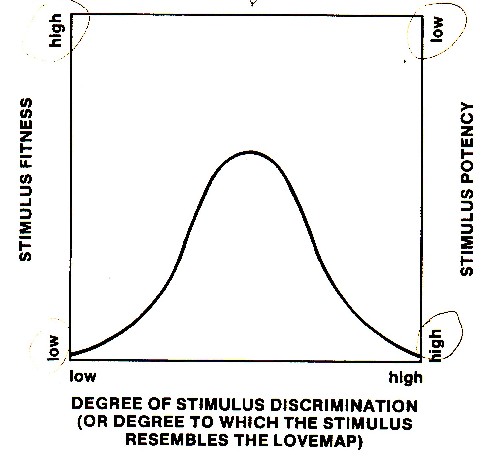
Figure 1.6
Relationship of total stimulus potency (or overall desirability) of a
perceived
individual to the number of near optimally-discriminated-for-fitness
stimuli by a perceiving individual. 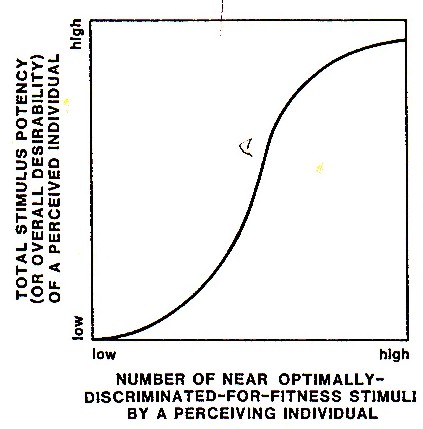
Figure 1.7
Human heterosexual-male sexual releasing stimuli.
(a) Phylogenetically familiar, low degree of discriminableness, nubile-female shape
on the tire mudguard on an 18-wheel, semi-tractor trailer, originally advertising a
product name.
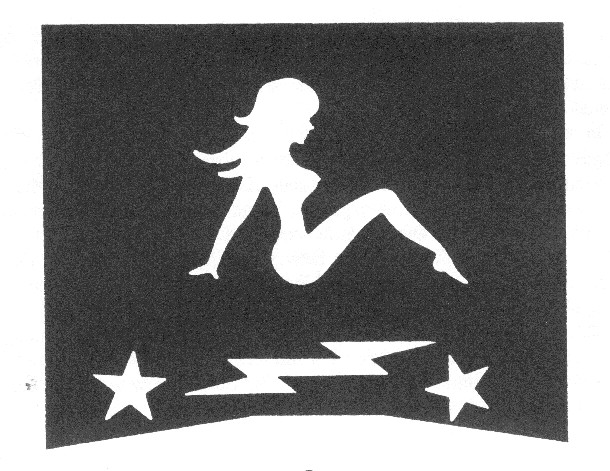 The
visual vulnerability of human males to the sexual conditioning of
ontogenetically made-familiar animate and inanimate objects and contexts
is exploited by the garment industry in the industrialized world. The
industry ~ has made lace a sexually dimorphic, female fabric (i.e., an
inanimate object) "K that has been conditioned speci?cally to sexual
arousal by being used almost exclusively on adult female lingerie and
bridal gowns. (See Figure 1.7b.) Figure 1.7b
(b) Ontogenetically familiar, highly discriminable, frequently conditioned sexual
releasing stimulus on adult female lingerie and bridal gowns. 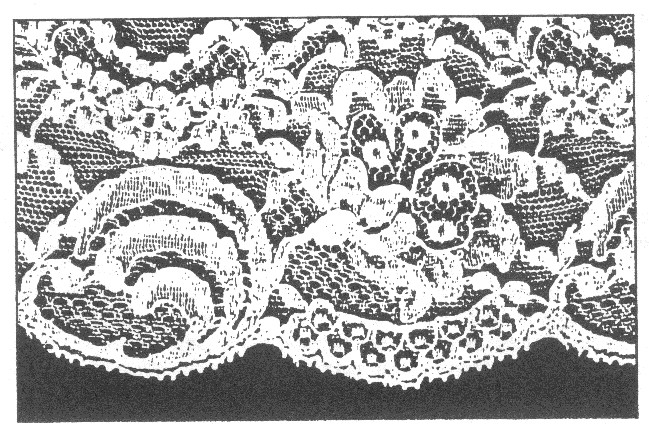
Figure 1.8
"Infant/child schema" of humans.
Left: Head proportions that are generally considered to
be "cute."
Right: Adult forms, which do not activate the drive to care for the young
(broodcare). 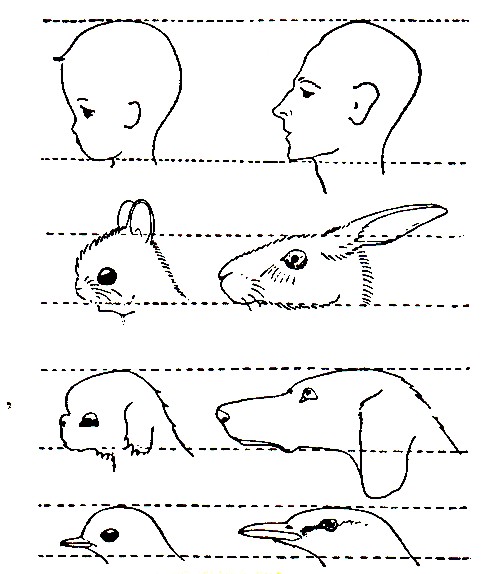
(From
Eibl-Eibesfeldt, 1975, p. 491 [originally published by K. Lorenz in Die
angeborenen Formen möglicher Erfahrung, Zeitschrift Tierpsychologie,
1943, 5, 235-409]. Reprinted with the permission of I. Eibl-Eibesfeldt.)
The relationship of relative age and relative gender of
individuals toward whom one is sexually attracted—represented by four
Attraction Quadrants.
(North- and East-pointing arrows are explained in caption to Figure
1.11.)
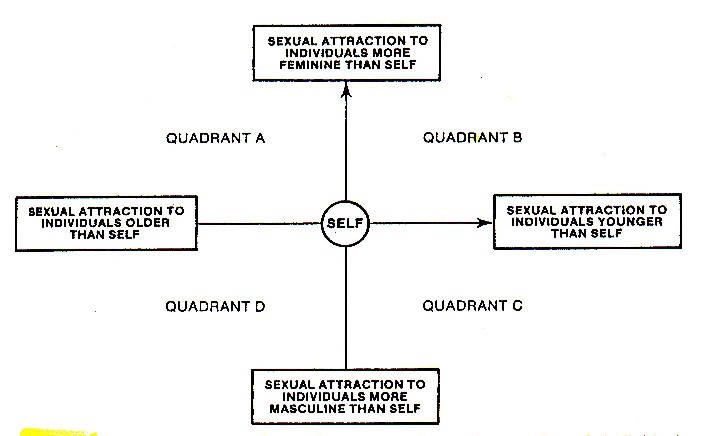
Relationship of male androphilic and gynephilic
pedophiles and ephebophiles to male individuals with other sexual
orientations and to the Attraction Quadrants of relative-age and
relative-gender attraction throughout the life span.
(North- and East-pointing arrows are explained in caption to Figure
1.11.) 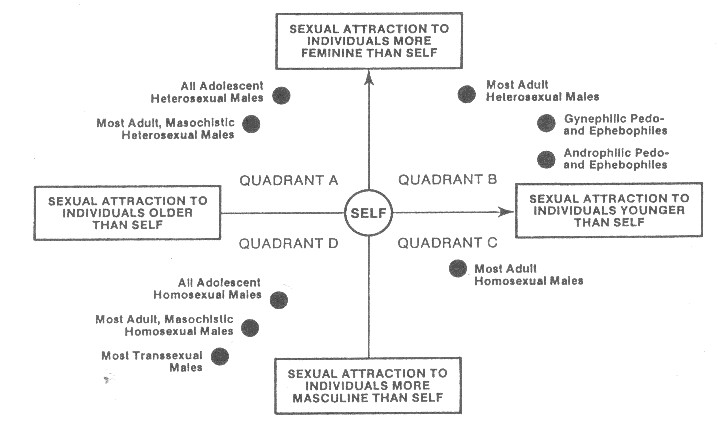
Relationship of brain masculinization and brain
defeminization in the male to relative-age and relative-gender preferences
in the four Attraction Quadrants. Compare to Figure 1.10 and see text. The
North- and East-pointing arrows signify that the brains of male (and
female) fetuses start out unmasculinized and feminized and that their
degree of masculinization and defeminization is primarily responsible for
the variance in gender-typical behavior and gender-typical sexual
attraction both within and between the two biological sexes.
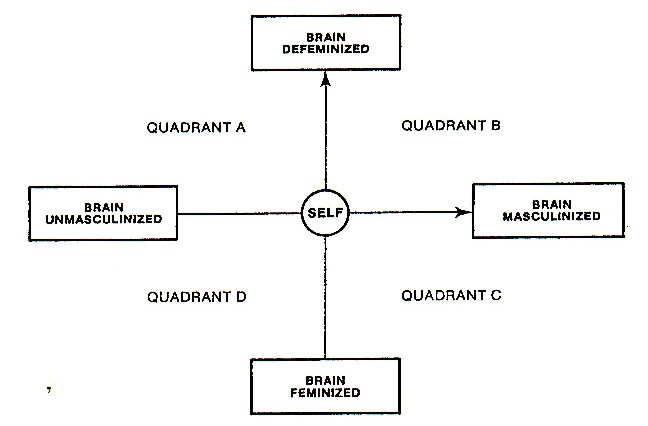
|











